The actual number will depend on the board itself. An average motherboard has about 4-8 SATA ports. Things such as motherboard size and chipset matter here. Currently, the number of SATA ports on motherboards ranges from 0 – 13. But again, a high number of SATA ports are only found in expensive and specialized boards
If you want to install a hard or optical drive, you need a SATA port. Motherboards have a limited amount of SATA ports, but most of the time, 2-3 SATA ports are more than enough for an average user.
However, specific scenarios may require you to have a lot of SATA ports. For instance, if you are building a NAS PC or a PC for archiving data, you could use as many SATA ports as possible. In such scenarios, asking how many SATA ports you have becomes essential.
SATA is one of the two interfaces used for storage devices, the other being NVMe PCIe for SSDs.
There are different versions of the SATA interface. The most current version is the SATA 3 with 6 Gbps or 750 MB/s transfer speed.
TABLE OF CONTENTS
What are SATA and SATA Ports?
The SATA interface was introduced sometime in the year 2000. It was a breakthrough implementation because it was meant to replace the older PATA standard, which used ribbon cables.
SATA cables were much smaller, and their physical profile on the motherboard didn’t stand out as much as PATA did.
Three primary devices use the SATA connection:
- Hard Disk Drives
- SATA SSDs
- Optical Drives
You may have seen them on the motherboard too. A SATA connector commonly appears as an L-shaped connector.
Since their inception, the SATA implementation has been improved, and the current iteration, SATA 3.0 (III), is the fastest, with a speed of 6 Gigabits/s (Gb/s).
The following are the speeds of the different SATA versions:
- SATA 1: 1.5 Gbps or 0.1875 GB/s
- SATA 2: 3.0 Gbps or 0.375 GB/s
- SATA 3: 6.0 Gbps or 0.700 GB/s
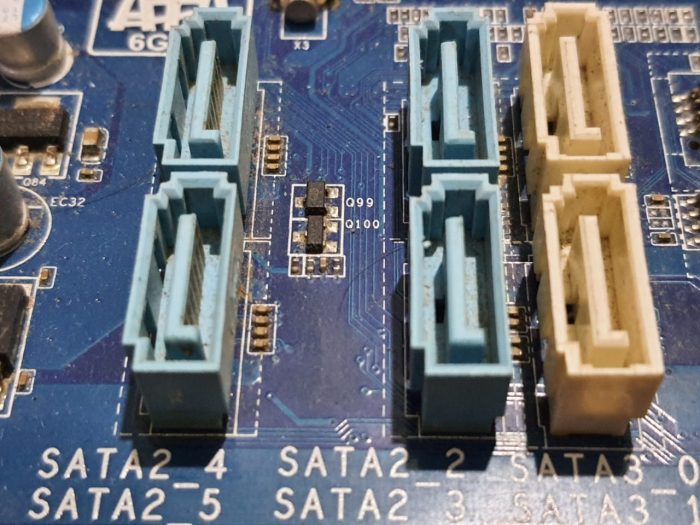
Image: Adding storage devices with more SATA ports on a motherboard.
The motherboard above has four SATA 2 ports (colored in blue) and two SATA 3 ports (colored in white).
Also Read: How to Identify SATA 1 2 3 on Your Motherboard and Drive?
PCIe NVMe vs. SATA
While SATA is the primary standard for storage, PCIe NVMe is also used for high-speed SSDs.
There is a drastic difference between the speeds of the SATA interface and the PCIe.
With the current 4th gen PCIe, each PCIe lane has a speed of 1,969 MB/s. A typical NVMe SSD utilizes 4 PCIe lanes and thus has a theoretical rate of 7,877 MB/s. Contrast this to the SATA 3 interface with a max theoretical speed of 750 MB/s only.
In reality, an average Gen 4 NVME SSD can have a read speed of 5000 MB/s, such as the Samsung 980 Pro, and an average SATA 3 SSD only has a transfer speed of 550 MB/s.
Compare these speeds to an average rate of 200 MB/s on a SATA Hard Disk.
Also Read:
- Which is Faster, PCIe or SATA?
- Does it Matter Which SATA Port You Use?
- How Many PCIe Lanes Does M.2 Slot Use?
So How Many SATA Ports Do I have?
You’re probably interested to know how many SATA ports you have because this will go a long way in determining the number of drives you can connect to your computer.
There are several ways to find this number; some may be straightforward, while others require digging.
1. Consult the Manufacturer
This is the best way to go about getting information on your motherboard. All reputable motherboard brands have an extensive data sheet available for their motherboards.
Getting this information should be pretty easy if you know the model number of your motherboard. If you have the board’s packaging, you can try and find the user manual, and if one was shipped with it, go ahead and search through it.
You can always visit the manufacturer’s website if this does not yield the desired results. A quick google search can land you there, and once you arrive, head over to a products section and see if your board is listed.
There you will find a lot of information and a detailed breakdown of the board and its ports. If the board has a certain number of SATA ports, they will be listed, including their performance specification and position.

Image: Gigabyte GA-P67A-UD3 SATA Specifications
For instance, above, you can see the specifications for the Gigabyte GA-P67A-UD3. Here you can see that the motherboard has two SATA 3 ports and four SATA 2 ports. It also tells you the identification of the SATA slots.
Finding Out Motherboard Model
For this method to work efficiently, you will need to know the model number of your motherboard. The easiest way to find out the model of your motherboard is to go into the system information. In Windows 10, in the search bar, type System Information. This will open a window detailing the specification of your PC. Look for the row labeled as System Model. Another method is to use third-party software such as CPU-Z.
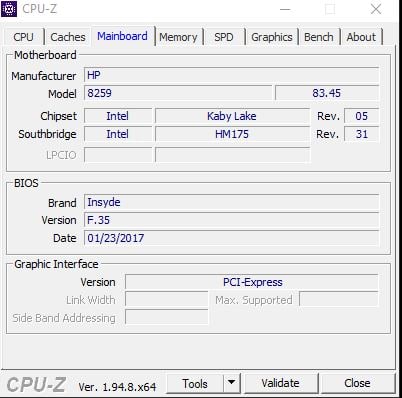
Image: There is a dedication section in CPU-Z for motherboard information.
Once you know the motherboard makes and models, you can search for the spec sheet on Google.
2. The Manual Way
The first two ways are the more straightforward methods to determine how many SATA ports you have on your computer.
You can accomplish the same if you open your case and manually count the SATA ports on your motherboard.
This method is excellent because you can get direct feedback, and if you need to assign any of the SATA ports to a device you already have, you can plug the device in immediately.
To do this, however, you need to take some precautions. Switching off your computer and disconnecting it from any power source before dismantling it is best.
Additionally, if counting the slots involves completely removing the board, properly handle it. All in all, take the necessary steps to conduct this process safely.
Once you know exactly what ports to look out for, this method can produce accurate results.
However, with this method, while you may be able to figure out how many SATA ports you have, you may not find their version.
This is particularly confusing when you have a motherboard with differently colored SATA ports. Each color here corresponds to a different SATA version. Since ports from v2.0 and v3.0 look the same physically, they are differently colored to highlight their version.
Through manual counting, it knows which color corresponds to which version may be complex. However, all SATA ports generally have a label next to each slot highlighting its performance.
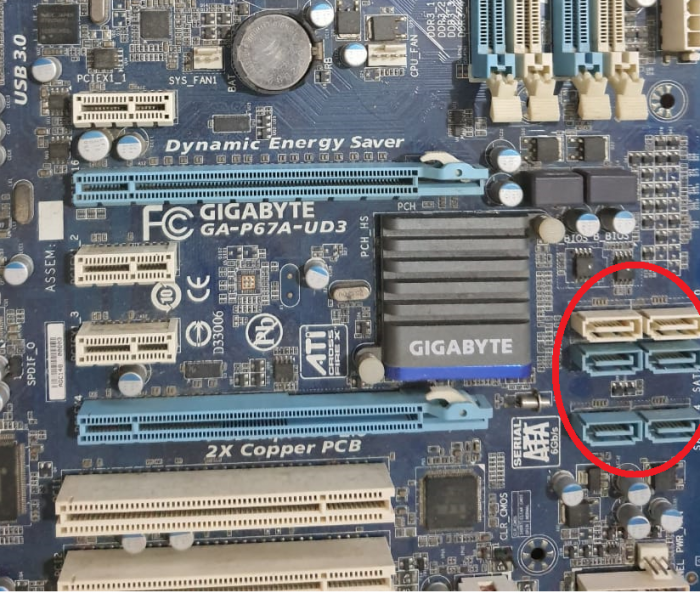
You can see this motherboard has 6 SATA ports.
On closer inspection, you can see that SATA 2 and SATA 3 ports are labeled clearly on the motherboard. You can see that ports 0 and 1 are SATA 3, and ports 2-5 are SATA 2.
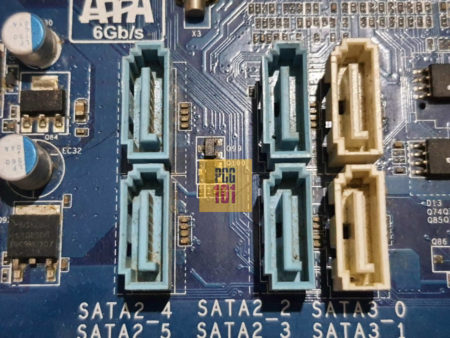
3. Using Third-Party Software
Another easy way would be to use third-party software that scours your computer for system information.
Some software can read your device’s status and provide feedback on your SATA ports, including whether they are in use.
This method can be a good idea when searching for information for a while but to no avail. It is also good if you feel uncomfortable opening up your case and physically counting the ports.
However, third-party software is often limited in the information it can provide regarding your hardware.
For instance, HWiNFO is a popular free software that can read your drive’s status and highlight its SATA speed.
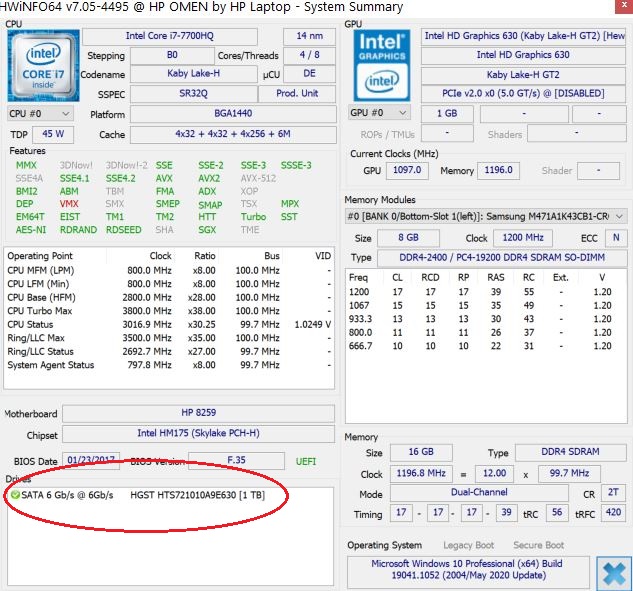
Image: One drive is connected to this system on the SATA 3 interface (6 Gb/s).
The software also gives much other helpful information, including the model and size of the hard drive connected to the SATA port.
4. The BIOS
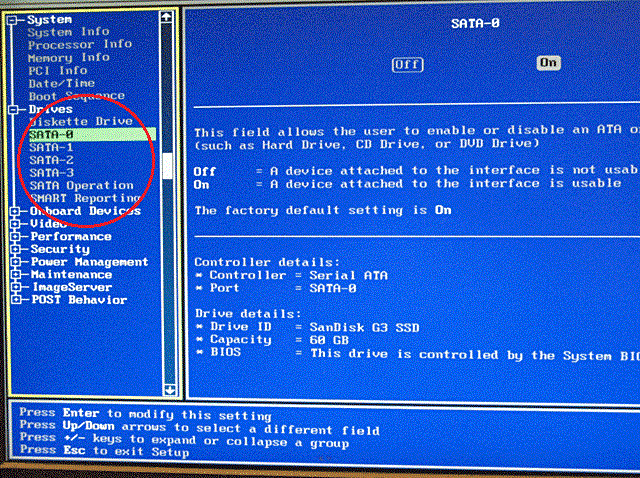
Image Source: sandisk.com
The BIOS is a treasure trove of information. If your BIOS supports it, you can use it to see how many SATA ports you have on your computer.
BIOS menus may differ for different computers; specific key combinations are needed to access them. But once you do, you can tell how many ports you have and even see which ones are active.
When in BIOS, look for a section that relates to DRIVES. You may be provided with information about which SATA port is occupied and the total amount of SATA ports available.
The navigation and information in BIOS differ from version to version.
Accessing and navigation across BIOS is not for newbies. When in doubt, exit the BIOS and do not mess around with the settings.
Again, there could be limitations to this method as well. While you may be able to determine the amount of SATA slots you have, you may not decide which version they correspond to.
5. Consulting an Expert
If you have someone you know to be an expert on computer motherboards, you can consult them to find out about your board.
This can be the retailer who sold you the board or a friend who seems more knowledgeable. Regardless, for you to get accurate information, the person must be well-versed in this.
Determining the number of SATA ports shouldn’t be too hard, so don’t let this make you feel like it’s a highly complex endeavor.
A technician you trust can not only tell you how many SATA ports you have. They can also give you guidance on how you can go about using them if you are stuck.
You can accomplish the same by posting to an online forum such as this one, where you can run into users with the same board as you, and they can help.
The sources of information are limitless once you start looking.
How to Add More SATA Slots?
If you do not have sufficient SATA ports on your motherboard and want more, you can get a SATA expansion card for the PCIe slots.
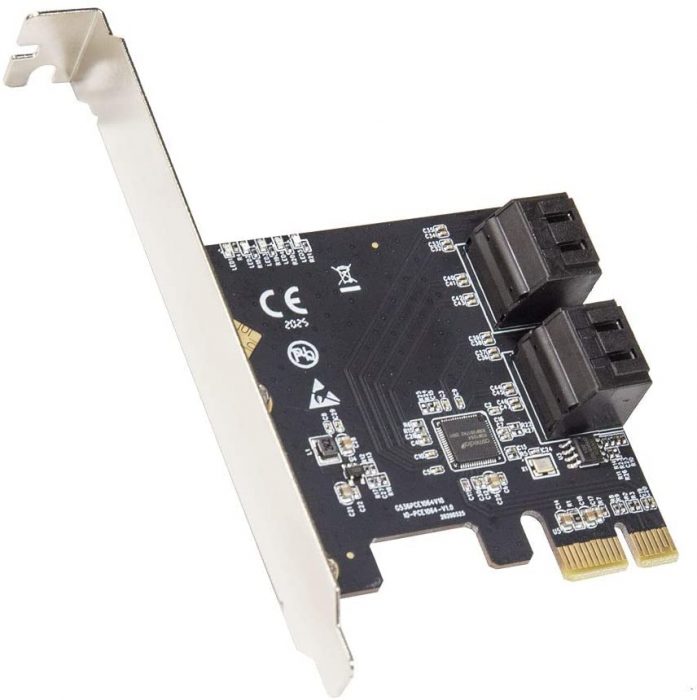
Image: An expansion card that goes into x1 PCIe slot and adds 2 SATA 3 places to your PC.
Expansion slots come in different sizes. Smaller cards have fewer expansion slots but also require a smaller PCIe slot. Larger expansion slots have a lot of SATA ports but also occupy a larger PCIe slot.
Also Read: 10 Things That Can Be Plugged in PCIe Slots
Conclusion
When it comes to finding out how many SATA ports I have, there are many ways to figure this out.
The easiest method by far is to do a Google search if you know the model of your motherboard and see what the specifications have to say.
On a new board, you can also count the SATA ports manually on the board or go ahead and find a user’s manual.
You can still do the same on an already installed board. But you can also install software to help with the process or get the information from the BIOS if your version is robust enough. However, using third-party software or BIOS can have limitations.
FREQUENTLY ASKED QUESTIONS
1. Is the number of SATA ports limited by the motherboard, or can additional ports be added using expansion cards?
The number of SATA ports on a computer is typically limited by the motherboard, as this determines the number and type of input/output connections that are available.
However, it is possible to add additional SATA ports using expansion cards or other hardware components, although this may require additional configuration or setup.
2. Can the number of SATA ports affect the performance of my computer, and if so, how?
The number of SATA ports can have an impact on the performance of a computer, particularly when it comes to storage-related tasks.
Having more SATA ports can allow for more storage devices to be connected and accessed simultaneously, which can improve overall system performance and reduce bottlenecks.
However, it is also important to consider other factors such as the speed and type of storage devices being used, as well as the capabilities of other hardware components such as the CPU or RAM.
3. Are there any limitations on the type or size of storage devices that can be connected to SATA ports, and if so, what are they?
There may be some limitations on the type or size of storage devices that can be connected to SATA ports, depending on the specific hardware configuration and the capabilities of the motherboard and other components.
For example, some older motherboards may not support larger or higher-capacity hard drives or solid-state drives, or may only support certain types of storage interfaces.
It is important to check the specifications of the motherboard and other hardware components to ensure compatibility before adding or upgrading storage devices.
4. How can I troubleshoot issues related to SATA ports, such as devices not being recognized or performance problems?
If you are experiencing issues with SATA ports or connected storage devices, there are several steps you can take to troubleshoot the problem.
These may include checking the physical connections and cables, ensuring that the BIOS settings are configured correctly, updating drivers or firmware for the motherboard or storage devices, or testing the devices on another computer to rule out hardware issues.
It is also important to consult the user manual or technical support resources for your specific hardware components for further guidance on troubleshooting SATA-related issues.
Also Read:
